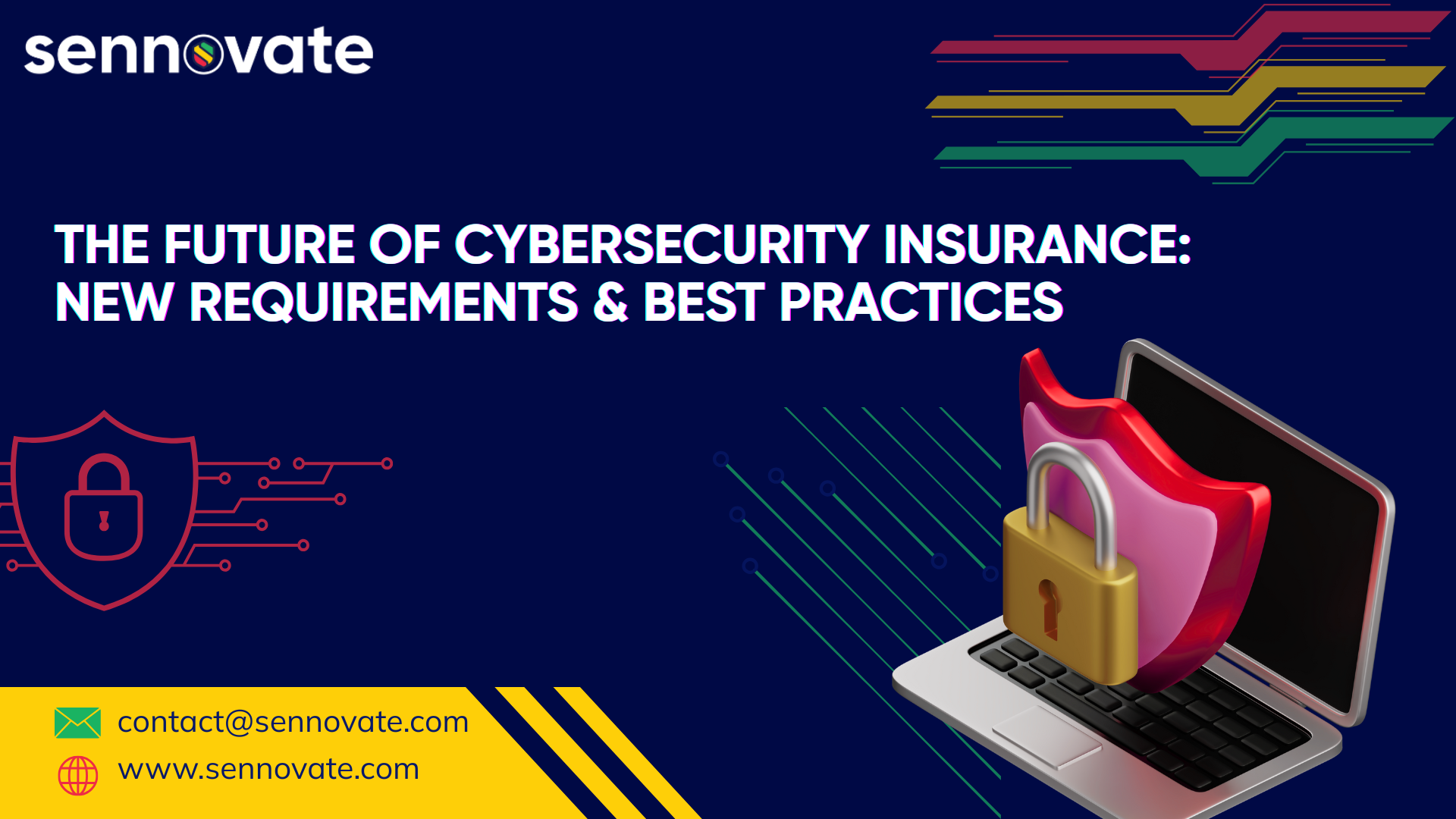
The Future of Cybersecurity Insurance: New Requirements & Best Practices
Cybersecurity insurance is experiencing a significant transformation. With ransomware expenses projected to reach $265 billion worldwide in 2024 (Cybersecurity Ventures) and the complexities introduced by AI-driven attacks affecting risk evaluation, insurers are becoming more stringent with their policies, while businesses find it increasingly difficult to meet qualification criteria. By 2025, cyber insurance will evolve from being a mere “nice-to-have” to an essential strategic requirement, accompanied by rigorous technical specifications.
This blog delves into:
✔ The cyber insurance crisis of 2025 – Understanding why 68% of small and medium-sized businesses encounter coverage rejections
✔ New requirements from insurers – Multi-Factor Authentication (MFA), Endpoint Detection and Response (EDR), and zero trust principles are now mandatory
✔ The role of Managed Security Service Providers (MSSPs) like Sennovate in assisting businesses to obtain affordable coverage
✔ Practical measures to ensure your policy remains relevant in the future
1. The Cyber Insurance Crisis of 2025
Why Premiums Skyrocketed
| Factor | Impact |
| Ransomware Surge | 143% increase in attacks (2023-2024) |
| AI-Powered Threats | 300% faster attack propagation |
| Supply Chain Disasters | Avg. claim: $4.5M (Up from $1.2M in 2022) |
📌 Result: Premiums rose 120% year-over-year, while deductibles hit $500K+ for mid-market firms.
The “Insurability Gap”
- 65% of insurance providers currently exclude attacks sponsored by the state.
- Zero-day vulnerabilities frequently nullify coverage.
- Companies lacking EDR/MDR face automatic denial.
2. 2025’s Non-Negotiable Insurance Requirements
- Technical Controls (Minimum Entry Bar)
- Multi-Factor Authentication (MFA)
- Mandatory for ALL users (including third parties)
- Biometrics or FIDO2 keys are preferred over SMS
- Endpoint Detection & Response (EDR)
- 24/7 threat hunting capabilities
- Real-time response playbooks
- Encrypted Backups
- Air-gapped + immutable storage (proof required)
- Weekly recovery testing
- Zero Trust Architecture
- Micro-segmentation logs must be auditable
Operational Requirements
- Security Awareness Training
- Quarterly phishing simulations (≥90% pass rate)
- Incident Response Plan
- Third-party IR retainer is mandatory
- Vendor Risk Management
- SOC 2 Type II reports for critical suppliers
3. Emerging Insurance Trends Reshaping Coverage
Trend 1: AI-Driven Underwriting
Insurers are now utilizing AI to:
- Scan networks for vulnerabilities in real time
- Analyze threat intelligence feeds
- Dynamically adjust premiums based on risk exposure
Trend 2: “Pay-As-You-Secure” Policies
- IoT Example: Discounts for:
- Network segmentation (40% premium reduction)
- Firmware patching automation (25% reduction)
Trend 3: Ransomware Sublimits & Co-Insurance
Typical Policy:
- $10M coverage → $2M ransomware sublimit
- 20% co-insurance on ransom payments
4. Industries Hit Hardest by New Rules
| Industry | Biggest Coverage Hurdle | Solution |
|---|---|---|
| Healthcare | Legacy medical IoT devices | Network segmentation + virtual patching |
| Manufacturing | Unpatchable OT systems | Air-gapped backups + cyber-physical EDR |
| Retail | Third-party payment processors | API security testing + tokenization |
📌 Case Study: A US hospital chain saved $400K annually on premiums after implementing Sennovate’s zero-trust framework.
5. Best Practices to Secure Affordable Coverage
Step 1: Pre-Audit Gap Analysis
- Use tools like CyberCNS or BitSight to simulate insurer scans
Step 2: Implement “Insurance-Ready” Tech Stack
| Requirement | Cost-Effective Tools |
| MFA | Cisco Duo, Microsoft Authenticator |
| EDR/MDR | SentinelOne, Sennovate Managed EDR |
| Backup Encryption | Veeam + AWS S3 (immutable mode) |
Step 3: Negotiate with Evidence
- Present:
- Penetration test reports (≤90 days old)
- Automated compliance dashboards (e.g., Drata)
- IR drill recordings
6. How Sennovate’s Cybersecurity Services Guarantee Insurability
As a premier provider of cybersecurity services in the USA, we assist clients:
- Successfully Complete Insurance Technical Audits
- Utilize insurer-approved EDR and MFA
- Produce compliance reports that are ready for audits
- Achieve a 30-60% Reduction in Premiums
- Adopt a zero trust approach to decrease risk scores
- Engage in negotiations with carriers using our threat intelligence
- Ensure Ongoing Compliance
- Round-the-clock monitoring through Sennovate’s SOC
- Automated updates to policies in response to new requirements
📞 Obtain an Insurance Readiness Assessment:
Email: contact@rjayaramansennovate-com
Web: www.sennovate.com
